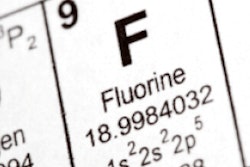
This story has been updated. Please see the update here. A U.S. shortage of sodium fluoride, which is added to public water supplies to prevent tooth decay, has led a municipality in New Hampshire to stop fluoridating its water for multiple towns for several months.
City of Dover representatives notified its residents on July 5 that its sodium fluoride supply will soon be gone, making it unable to achieve optimal levels of 0.7 mg/L in its public drinking water system. This shortage also affects some areas in Madbury, Rollinsford, and Somersworth, which also are part of Dover's water system, according to an announcement on the city's website.
"The City of Dover is running out of sodium fluoride, and it will temporarily stop adding it to the public drinking water as it cannot obtain more because of a nationwide shortage," according to the announcement.
The water system is expected to go without fluoride for several months because the city expects it will take time to replenish its supply. Dover began adding sodium fluoride to its water system in 1990 following approval from voters.
On July 8, the ADA, through its Council on Advocacy for Access and Prevention (CAAP), and the Association of State and Territorial Dental Directors (ASTDD), acknowledged that multiple states and water systems have reported challenges in obtaining sodium fluoride to the U.S. Environmental Protection Agency, the U.S. Centers for Disease Control and Prevention (CDC), and the ASTDD. Also, the ADA encouraged communities to use "innovative strategies" to maintain optimal fluoride levels during the supply shortage, according to a story published July 8 in ADA News.
"These shortages are expected to be temporary," representatives from CAAP and ASTDD said in the article. "Although they may result in a relatively short-term suspension of community water fluoridation, they should not be used as a justification for ending community water fluoridation. The long-term costs of discontinuing fluoridation are much higher."
The shortage may not affect all states. Most communities add fluorosilicic acid to public water systems, and others use sodium fluorosilicate, according to the CDC.
Though states and communities may respond differently, dental associations, health departments, oral health advocates, and community members should collaborate to ensure oral health remains a priority, according to the story.
"Maintaining optimal fluoride levels for safe drinking water will improve oral health and quality of life and help take a significant step toward achieving health equity," CAAP and ASTDD said in the article.
To cope with shortages, CAAP and ASTDD recommend taking several actions, including engaging in community-based advocacy and reinforcing the power of prevention through good oral health habits, especially when optimally fluoridated water is not readily available.




















